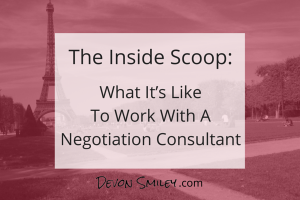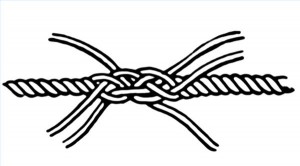We like to think that we are logical decision makers, but humans are notorious for making biased decisions. This got hammered into me early in my career, when I attended my previous company’s strategic leadership retreat for the top 300 leaders of the company. I thought this would be an amazing opportunity to see strategic thinking at its best, but what I saw were things that didn’t make sense.
For example, one year the CFO / Chief Strategy Officer presented that 90% of his department’s strategic projects were behind schedule or not living up to their original expectations. In the first year, I thought it was a great act of humbleness and willingness to show that strategic planning could be tough. But at the following year’s retreat, when he admitted that 90% of that year’s projects were also failing, I began to wonder how this leader still kept his job.
Over the years, I realized that this kind of biased thinking is not limited to that CFO or strategic planning. In fact, leaders are constantly making biased decisions that could have a dramatic impact on their business. They make decisions that are based on faulty memories. How they view and use data to make decisions is biased. Their ‘guts’ are notoriously horrible judges of talent. Even how they view themselves and their own capabilities are skewed.
But the first step in un-biasing your decision making is to acknowledge that these biases exist in you. That is why I wanted to share these 4 cognitive biases that all leaders should be aware of.
You’re not as smart as you think you are
The first bias that every leader needs to be on the lookout happens when we think about our own capabilities and skill levels. While we like to think that we are aware of our own strengths and weaknesses, research shows that people tend to overestimate themselves. Don’t believe me, here are some hilarious research findings:
- 93% of American drivers rate themselves in the top 50% of driving ability
- 70% of people believe themselves to be above average leaders
- 83% of people believe themselves to be above average in getting along with others
- 68% of professors ranked themselves in the of 25% of teaching ability
- Men overestimate their IQ by 5 points, but interestingly women underestimate their IQ by 5 points
This tendency to believe that you are better than you are is technically called the Illusory Superiority cognitive bias, but everyone else knows it as the Lake Wobegon effect. Lake Wobegon is the fictional town in NPR’s Prairie Home Companion show where “all the women are strong, all the men are good looking, and all the children are above average”
For leaders, this overestimation of their own abilities can be incredibly harmful to their careers and their teams. This is the kind of bias where the leader will propose a project that they don’t have the ability to deliver. This bias will also lead leaders to trust their own opinions more than the opinions of others, even if those others are the true “experts”. They start believing their own hype, and stop being open to new ideas or things that challenge their opinions.
Your ideas are not as valuable as you think
Similar to overestimating your own worth, everyone has a tendency to overestimate the worth of the things they own or have made themselves. It shouldn’t be surprising to us that our own ideas and the things we own matter to us. But the distorted thinking creeps in when we want others to see it just as valuable as we do. Researchers call this bias the Ikea Effect, but I like to call it the “Not Invented Here” effect. The mere process of creating something like some IKEA shelves or a new customer invoicing process, actually causes you to overvalue its worth.
A lot of companies actually use this bias to hook their customers into integrating more with the company. Every time we create a personal profile, customize a website for our preferences, or invest our time in a website, that website is becoming significantly more important in our mind. As we invest more in something, we justify our investment by believing the thing is more important and more important.
I have seen this as a dangerous trap for many leaders, especially those who have a lot of experience. A new leader doesn’t have a huge track record of successes and failures to pull from. So they are more open to new ideas. But the experienced leader has a lot of successes in their past, and that means they are more likely to overvalue those past ideas. “I have the perfect solution to this problem, even though it was from 20 years ago in a different company from a completely different industry. It worked for me then, so it should work for me now.”
Things take longer than you think
The most common bias that all leaders fall victim to planning how long a task will take or how much resources it will require. That CFO from my previous company was falling victim to this bias. He and his leadership team were trying to push through company wide transformations, but at the same time they were pushing their team to deliver the results in shorter and shorter timelines.
Having unrealistic expectations for how to deliver a project is something we all have experienced. We create our project plan with conviction, and a belief that we have accurately mapped out how long it will take and how much effort it will require. And then 2 weeks into the project, we realized we got it all wrong. It happens again and again and again. This failure to plan correctly is called the Planning Fallacy, and was originally discovered by Daniel Kahneman and Amos Tversky.
Our inability to accurately plan is not because we don’t understand our tasks or the project at hand. The issue pops up because we use our previous experiences to judge how long a new project will take. Unfortunately, our memories suck at providing accurate information on how you did something in the past. We want to believe that our memories are like a security camera, accurately capturing every single bit of detail no matter how boring. But in reality, our memories are like a trailer to a movie. We remember the exciting bits and leave out the parts of how something actually got done.
When leaders start having unrealistic expectations on their projects they can push their team beyond their limits and potentially even cause irreparable damage to the team. I saw this firsthand. The people in the CFO’s department were disengaged and cynical about their projects. What should have been a place where the top talent in the company was working on the largest company-wide transformations to date, became a place where careers died.
You see patterns that don’t actually exist
One of the key roles of a leader and his/her leadership team is to make sense of all the data that is streaming into the business and to make appropriate decisions based on that data. When you see that a certain product is underperforming in one area, you can decide whether to continue the product line, make improvements to it, or reinvest somewhere else. Personally, I have known many leaders who saw themselves as experts in filtering through all the data to find that critical bit of information.
Unfortunately, our brains are not computers and are not great at filtering through tons of information. In fact, our brains are designed to see patterns and to try and make sense of data, even if those patterns don’t exist. For example:
- During WW2, Londoners were certain that German V-2 rockets were targeting specific neighborhoods and following a preset pattern. The truth was they weren’t. The bombs fell in random locations.
- Basketball announcers love talking about a player having a hot hand. While the player may be making more in a current streak, statisticians continuously prove that hitting your previous basket has no bearing on you making future baskets. There is no hot hand.
Our brains struggle to deal with random, vague, or missing information, and when we are faced with incomplete information we begin to imagine we can still see a pattern. Like when you can still perceive the puzzle’s picture even if you are missing a few pieces. But the reality is a lot more complex. Often you aren’t putting together pieces from only 1 puzzle. Most of the time you are trying to form 1 picture from 5 different puzzles that all are missing pieces.
This tendency to see false patterns in randomness is called the Clustering Illusion. In business, you never have the complete information, yet leaders still have to make decisions. So they start seeing patterns where none exist. And all of the sudden, some completely unrelated market analysis, a few competitor press releases, and some customer feedback combine to justify a new strategic direction for your company.
How to make unbiased decisions
Hopefully by now, you understand that these biases exist and that you are just as likely to fall victim to them as anyone else. And this acceptance is critical. If you don’t believe you can be biased in your decision making, then you will be completely unaware when your biases actually pop up. After accepting that you too have a problem, then you can start making better decisions.
For me, the most important thing you can do to help make unbiased decisions is to talk with another person to act like a sounding board for your decision. That other person might have a more accurate assessment on you and your team’s capabilities. They might tell you that your plan is unrealistic, or help you open your mind to new ideas. Ultimately, this other person will help you get out of your own head, and instead see the situation from a new perspective.
Business & Finance Articles on Business 2 Community
(15)






